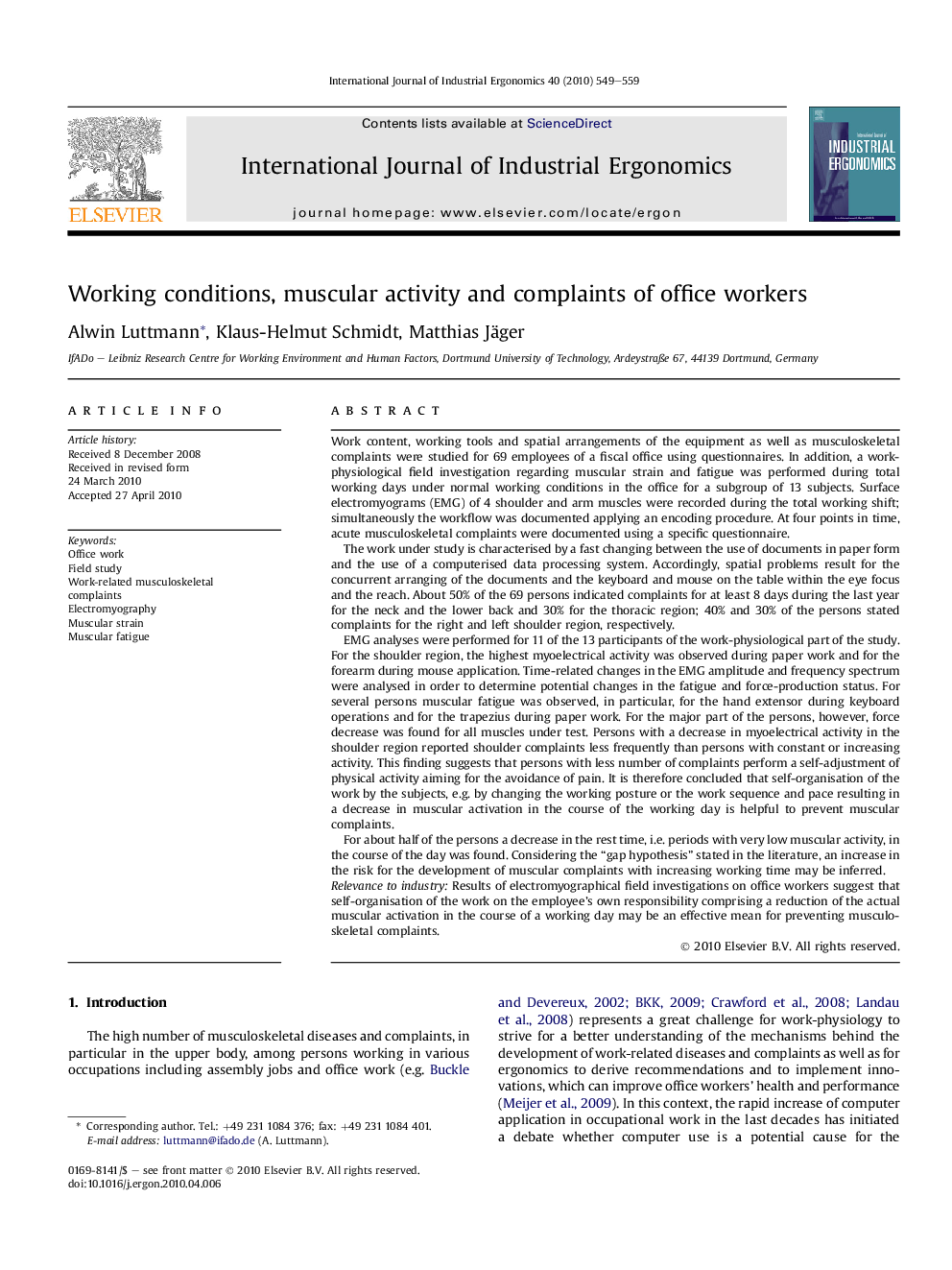| کد مقاله | کد نشریه | سال انتشار | مقاله انگلیسی | نسخه تمام متن |
|---|---|---|---|---|
| 1096648 | 1487456 | 2010 | 11 صفحه PDF | دانلود رایگان |

Work content, working tools and spatial arrangements of the equipment as well as musculoskeletal complaints were studied for 69 employees of a fiscal office using questionnaires. In addition, a work-physiological field investigation regarding muscular strain and fatigue was performed during total working days under normal working conditions in the office for a subgroup of 13 subjects. Surface electromyograms (EMG) of 4 shoulder and arm muscles were recorded during the total working shift; simultaneously the workflow was documented applying an encoding procedure. At four points in time, acute musculoskeletal complaints were documented using a specific questionnaire.The work under study is characterised by a fast changing between the use of documents in paper form and the use of a computerised data processing system. Accordingly, spatial problems result for the concurrent arranging of the documents and the keyboard and mouse on the table within the eye focus and the reach. About 50% of the 69 persons indicated complaints for at least 8 days during the last year for the neck and the lower back and 30% for the thoracic region; 40% and 30% of the persons stated complaints for the right and left shoulder region, respectively.EMG analyses were performed for 11 of the 13 participants of the work-physiological part of the study. For the shoulder region, the highest myoelectrical activity was observed during paper work and for the forearm during mouse application. Time-related changes in the EMG amplitude and frequency spectrum were analysed in order to determine potential changes in the fatigue and force-production status. For several persons muscular fatigue was observed, in particular, for the hand extensor during keyboard operations and for the trapezius during paper work. For the major part of the persons, however, force decrease was found for all muscles under test. Persons with a decrease in myoelectrical activity in the shoulder region reported shoulder complaints less frequently than persons with constant or increasing activity. This finding suggests that persons with less number of complaints perform a self-adjustment of physical activity aiming for the avoidance of pain. It is therefore concluded that self-organisation of the work by the subjects, e.g. by changing the working posture or the work sequence and pace resulting in a decrease in muscular activation in the course of the working day is helpful to prevent muscular complaints.For about half of the persons a decrease in the rest time, i.e. periods with very low muscular activity, in the course of the day was found. Considering the “gap hypothesis” stated in the literature, an increase in the risk for the development of muscular complaints with increasing working time may be inferred.Relevance to industryResults of electromyographical field investigations on office workers suggest that self-organisation of the work on the employee’s own responsibility comprising a reduction of the actual muscular activation in the course of a working day may be an effective mean for preventing musculoskeletal complaints.
Journal: International Journal of Industrial Ergonomics - Volume 40, Issue 5, September 2010, Pages 549–559